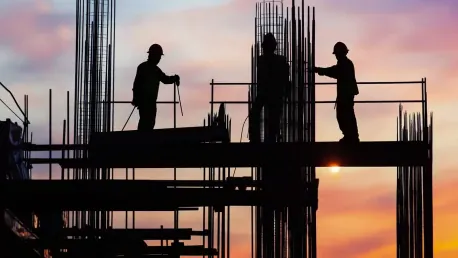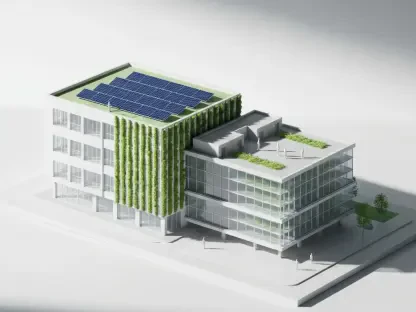Today we have Luca Calarailli with us, an expert in Construction, with extensive knowledge in design and architecture. Luca, thank you for joining us to discuss the potential impacts of the steel and aluminum tariffs on the construction industry.
What are the potential impacts of the steel and aluminum tariffs on the construction industry?The steel and aluminum tariffs present significant challenges for the construction industry. The increased costs of these essential materials can lead to higher overall project costs. This inflationary pressure often results in decreased demand for construction projects, as developers and investors may become hesitant to commit to higher-cost endeavors.
How do the 25% tariffs on steel and aluminum imports signed by President Trump affect construction material costs?These tariffs essentially increase the cost of imported steel and aluminum by 25%, making materials more expensive for contractors and developers. The immediate effect is a rise in the cost of materials, which will likely be felt across the industry very soon.
How soon do you expect these cost increases to be felt within the industry?The cost increases could be almost immediate. Historically, when tariffs were announced, price hikes for steel and aluminum happened quickly. Contractors may begin to notice the financial squeeze as early as a few months after the tariffs take effect, specifically by summer.
Can you explain how increased material costs might drive up the overall cost of construction?Higher material costs translate directly into higher project costs. Contractors will need to adjust their bids to account for the increased expenses, ultimately passing these costs onto the project owners or developers. This dynamic can reduce overall demand as projects become less financially viable.
How might this affect demand for construction projects?The increased costs can significantly dampen demand. Investors and developers may delay or cancel projects altogether due to the increased financial burden. This is particularly true for larger, more capital-intensive projects.
Which sectors of the construction industry are most likely to be impacted by the tariffs?Sectors such as commercial buildings, bridges, and residential homes are likely to be heavily impacted. However, areas with high demand, like data center construction and manufacturing facilities, might be more insulated from these effects.
Are any sectors insulated from these effects? If so, why?Data centers and manufacturing facilities may be somewhat insulated due to the high and consistent demand for their construction. This demand can help absorb the increased costs, making these sectors less sensitive to material price fluctuations.
How does the size and scope of a project determine its vulnerability to the effects of tariffs?Larger projects that require significant amounts of steel and aluminum are more vulnerable to the tariffs. For example, commercial buildings and government projects in the planning stage will feel the impact more than smaller, quicker-to-complete projects like single-family homes.
What are the potential impacts of tariffs on commercial buildings, multifamily buildings, and government buildings in the planning stages?These larger projects will likely see increased costs, potentially causing delays or cancellations. The higher upfront material costs can make it difficult to secure funding or justify the expense.
Are smaller projects like single-family homes less affected by tariffs?Generally, yes. Smaller projects that require less material can manage the cost increases more efficiently and may not experience the same delays or financial issues as larger projects.
How can price volatility as a result of tariffs impact project timelines?Price volatility can lead to significant uncertainties in project planning and execution. Contractors may face delays in starting new projects or extending timelines for current ones as they navigate the fluctuating material costs and potential supply chain disruptions.
you foresee any new projects being put on hold due to concerns about delays and supply chain disruptions?Absolutely, I do foresee delays and postponements. Many new projects could be put on ice, especially if developers and owners are worried about delays and inconsistent supply chains. This cautious approach is also influenced by experiences during the COVID years.
If so, what kinds of projects are most likely to be affected?Larger, more financing-dependent projects like commercial buildings, multifamily housing, and large infrastructure projects are most likely to be postponed. These projects generally require larger amounts of steel and aluminum and are more sensitive to cost increases.
How are contractors expected to manage increased costs due to the tariffs on steel and aluminum?Contractors may try to pass on additional costs to project owners through revised bids. They might also explore sourcing alternatives, bulk purchasing to lock in lower prices, or negotiating price adjustments in contract terms.
With sustained high interest rates and threats to the construction labor pool, how might these factors influence decision-making about capital allocation in the industry?High-interest rates and a shrinking labor pool can make capital allocation decisions more conservative. Developers might prioritize smaller, lower-risk projects or halt new investments until there’s more stability in material costs and labor availability.
When the Trump administration enacted steel tariffs in 2018, what were the immediate effects on steel prices and imports?In 2018, steel prices jumped almost immediately, rising by about 14% within the first year. Imports also fell by 19%. This created a price surge that the industry had to adjust to. We might expect similar impacts this time around.
you expect similar effects this time around?Yes, I do. Historical patterns suggest that we will see a rapid increase in prices and a decrease in imports, impacting the overall market dynamics just as significantly as in 2018.
What are the potential impacts of aluminum price increases on construction projects, particularly on the commercial side?For commercial projects, higher aluminum prices could lead to significant cost increases. This could result in delays, budget overruns, or even cancellations as the returns on investment are reconsidered.
How soon are contractors likely to feel the financial squeeze if the tariffs take effect in March?Contractors could start feeling the financial impact almost immediately, with significant pain points by the summer. Material costs can start to rise even before the tariffs officially take effect.
How quickly might these price increases impact contractors’ margins?Very quickly. Contractors working with fixed-price contracts will have to bear the brunt of these increases themselves, effectively squeezing their margins immediately.
How should contractors with existing contracts that didn’t factor in tariff costs manage these increased expenses?They should review their contracts and look for clauses that might allow renegotiation of prices. For future contracts, adding price escalation clauses could help manage unexpected material cost increases.
What steps can they take for future projects to protect their margins?Future contracts should include price volatility clauses to allow adjustments based on market conditions. Bulk purchasing and diversifying suppliers can also mitigate cost risks.
Are there contractors who may be able to mitigate the immediate impacts of material cost increases? If so, how?Those with large stockpiles of materials might cushion the impact temporarily. Additionally, contractors with strong supplier relationships might negotiate better terms or secure early pricing agreements to offset some of the increases.
According to the S&P Global report, which downstream industries apart from construction are expected to be disproportionately affected by the tariffs?The auto industry, homebuilding, and infrastructure sectors are also likely to be hit hard by the tariffs. Increased costs in these areas could dramatically affect project feasibility and timelines.
How might these increased costs impact homebuilding, infrastructure, and defense contractors specifically?Homebuilding might slow down due to higher costs and reduced consumer demand, whereas infrastructure projects might be delayed as public funding gets stretched. Defense contractors could face challenges in budgeting and delivering on projects as costs rise unpredictably.
What is your forecast for the construction industry given these new steel and aluminum tariffs?I foresee a period of significant adjustment, marked by increased project costs and potential delays. Developers may become more conservative with new project commitments, and smaller contractors might struggle the most. However, the industry is resilient and will likely adapt through revised project planning and cost management strategies.









